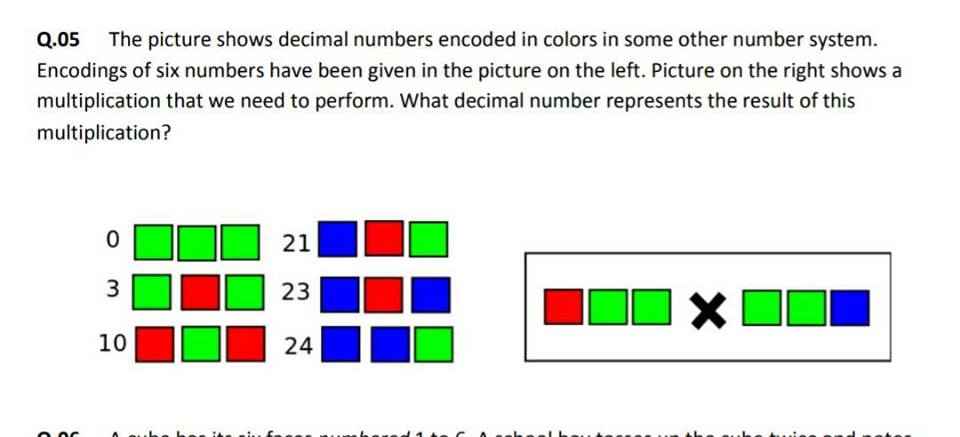Help me solve this problem. As this site appreciates a little effort from the person who posted it. Here's my thought process:
1) The matrix starts with 0 ( gr, gr, gr). It has three places which can take two different colors green and red so within the range(0-10) there are 2*2*2 = 8 possibilities. But numbers possible (0-10) = 11. Therefore some numbers have the same color coding. But that leads to confusion.
2) 0 ( gr,gr,gr)and 3 ( gr ,red,gr) meaning if I jump 3 numbers there's a new color which comes in the mid position This agrees with 21 ( bl,red,gr) 23(bl,bl,gr) and another thing is clear that the new color is placed over the previous color. Meaning the blue that is introduced in the last tile of 23 ( bl,red,bl) simply sits above the green tile of 21 and it simply jumps one step left in 24(bl,bl,gr) revealing the gr that lies under it. But that leads to confusion what would be 22?
Source: Undergraduate Common Entrance Examination for Design, January 2019

